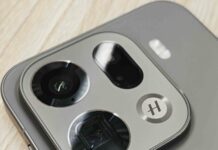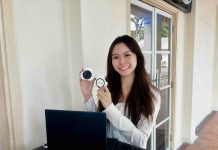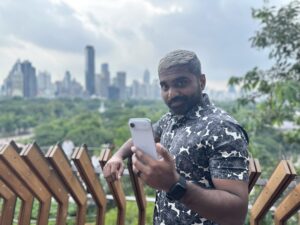
I upgraded from an iPhone 15 to the iPhone Air, and the difference hits you the moment it disappears into a pocket. The Air is shockingly thin and light—5.6mm and 165g—yet it doesn’t feel flimsy. The new titanium frame and dual-sided Ceramic Shield make it feel denser, more solid, like someone sanded off everything unnecessary and left the essentials. The display is brighter outdoors, scrolling is silkier at 120Hz, and touch latency feels tighter. Performance also gets a bump; apps open faster and games hold frame rate better. But the real win is how refined the experience feels day-to-day—less heft, fewer rough edges, more phone.
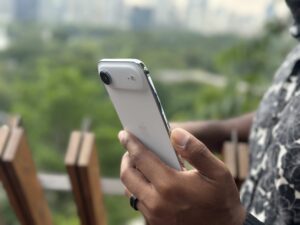
Quick note before we dive in: it’s eSIM-only. Setup was painless. I went to Settings → Cellular → Add eSIM, chose “Transfer from another iPhone” for my personal line, then scanned the QR code my travel carrier provided for a second line. Within minutes, both were live. If you’re in Singapore, major telcos support eSIM, so you’re good—request a QR or use eSIM Quick Transfer before you fly.
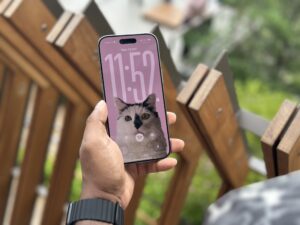
Now, the real test: a week in Bangkok with a phone this thin. First, durability. Apple rates the new Ceramic Shield 2 front as up to 3× more scratch-resistant and the Ceramic Shield back as up to 4× more crack-resistant. I went case-less and skipped a screen protector on purpose. After daily commutes, street shoots, and a couple of unplanned drops (don’t do this), mine came back without visible damage. Edges are pristine; the screen has no micro-swirls under harsh light. Physics still wins if you yeet it off a balcony, but for real-world knocks, the Air is tougher than it has any right to be at this thickness.
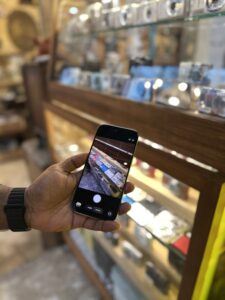
Cameras: as good as the iPhone 17 lens system—because that’s what you’re getting, plus smarter UX. The 48MP Fusion Main is flexible: default 24MP files look clean, and the sensor-crop 2× gives you optical-quality reach without a dedicated tele. Custom Main taps at 28mm and 35mm are a quiet superpower; I found myself bouncing between 26-28-35 for framing without thinking. Portrait mode is better too: subject separation holds up even in messy, low-contrast scenes, and Focus/Depth control after the shot saves the ones where your timing isn’t perfect.

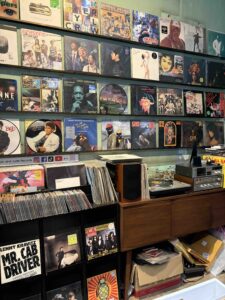
I stress-tested low light in Songwat—antique stores, record bins, old-school digicam stalls, and alleys covered in street art. The Air leaned on Night mode sparingly and kept colour honest. This is where Apple’s “mood” options (Photographic Styles) help: I shot “Warm” for food stalls and “Rich Contrast” for murals. Both kept the vibe without nuking shadow detail. Food at a crowded Michelin-star spot still looked true under mixed lighting—skin tones stayed natural, neon still popped, and greasy highlights didn’t blow out. Ultra-wide is solid for cramped interiors; distortion control has improved, and detail holds better along the edges than I remember on the 15.
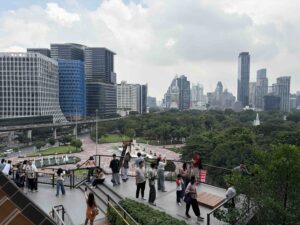
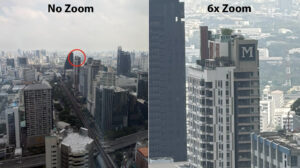
Video is where the Air quietly flexes. Stabilisation is automatic and effective enough that I stopped thinking about it. Handheld skyline pans from the Dusit Central Park rooftop garden looked gimbal-clean, and walking shots through narrow Songwat lanes didn’t wobble into jelly. Action mode is still there for chaotic movement, but the baseline stabilisation is so good that I rarely toggled it. The front camera surprised me too: Centre Stage now works for selfies and front-facing clips, not just video calls. That meant lining up a group shot was as simple as lifting the phone—the frame widened and shifted so everyone fit without herding people around. For vloggers, this is friction removed.
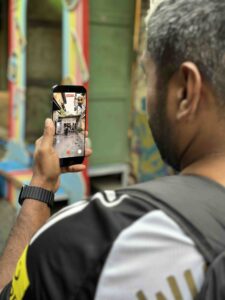
Dual Capture became my favourite toy. Shooting myself narrating while the rear camera recorded the street in front felt like a tiny documentary rig—one file, two angles, no editing gymnastics. I used it at night markets to capture reactions and the scene simultaneously, and it made quick social posts feel way more polished. Battery anxiety? Not really. Apple offers a slim MagSafe Battery Pack for the Air, but I never needed it. With maps, 200+ photos, a stack of 4K clips, and the usual messaging/calls, I ended most days with 20–30% left. For a phone this thin, that’s impressive. If you’re filming continuously, the pack is a nice safety net—but the base endurance is already “whole-day travel” good.
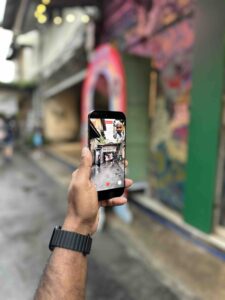
Back to the screen. The 6.5-inch Super Retina XDR is easier to live with. Peak brightness outdoors knocks glare down on river walks, the anti-reflective layer keeps content legible in cafés with glass facades, and the 120Hz ProMotion makes every scroll feel intentional. I read long menus, edited short clips, and reviewed photos mid-sun with fewer squints than on the 15. Audio also got a subtle lift—wider stage, a little more body—useful for checking clips without earbuds.

Performance felt “pro” without heat drama. The A19 Pro keeps workloads snappy while the chassis stays cool enough to hand-hold during 4K shooting. Wireless is rock solid: Wi-Fi 7 held speed in hotels with congested networks; 5G handoffs were quick on street level. iOS 26 adds small but meaningful quality-of-life touches—the translucent UI is calmer, Siri’s edge glow feels modern, and system-level intelligence (transcription, cleanup, organisation) quietly saves time. None of it screams “new,” but it all stacks into less friction.
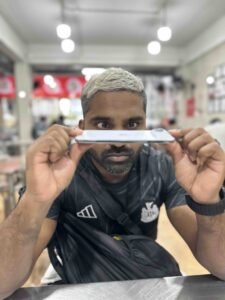
A word on thinness—because that’s the headline. Plenty of phones chase “thin,” and it often means worse battery, hot frames, or creaky builds. The Air doesn’t do that. It’s the rare ultra-slim phone that’s genuinely daily-drivable: sturdy, cool-running, and lasting. Every time I picked it up in Bangkok—slipping it into a light linen pocket before climbing to the rooftop garden or squeezing through Songwat’s tight aisles—I caught myself thinking: this is exactly how a travel phone should feel. Subtle. Capable. Never in the way.
Check out a video featuring all the highlights of my experience with the Apple iPhone Air below:
Could I nitpick? Sure. There’s no dedicated telephoto, so your best “zoom” is the excellent 2× crop; push past 10× and you’re in “memory, not masterpiece” territory. And while Centre Stage for calls works well, I still defaulted to stationary framing on long video chats. But those are minor in the context of everything the Air nails.
In my view, the iPhone Air is the most confident expression of “less, but better” Apple has shipped in years. It’s thin without compromise, tough without bulk, and creative without friction. If you travel, shoot, or just appreciate a device that disappears until it’s needed, this is the one.
From S$1,599 and available at the Apple Store now.




